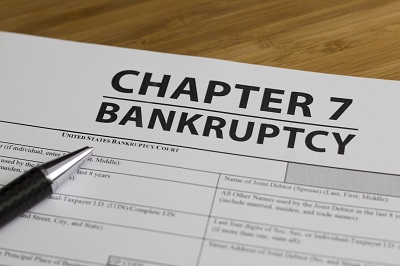After Chapter 7 341 Meeting: More Paperwork?

If you've recently attended your Chapter 7 341 Meeting, congratulations! This is a significant milestone in your bankruptcy process. However, the journey isn't over yet. After the 341 Meeting, there's a bit more paperwork to deal with before you can breathe a sigh of relief. In this post, we'll explore what happens next and how to navigate the additional paperwork smoothly.
What is the Chapter 7 341 Meeting?

The 341 Meeting, also known as the Meeting of Creditors, is a mandatory hearing where the bankruptcy trustee and your creditors can question you about your financial affairs. While this meeting is crucial for creditors to understand your case better, it's also a step towards discharging your debts.
What Happens After the 341 Meeting?

After your 341 Meeting, here are the steps you'll typically encounter:
- Bankruptcy Trustee's Review: The trustee will review the information provided to see if any additional actions are needed. If everything is in order, the trustee may:
- File a No Asset Report if there are no non-exempt assets to liquidate.
- Request more information or documents if something seems amiss.
- Objections from Creditors: Your creditors have until a certain deadline to file any objections against your discharge or to claim nondischargeable debts.
- Discharge Hearing: Once the trustee and creditors are satisfied (or their time to object has passed), the court will hold a discharge hearing.
Preparing More Paperwork

Here's what you might be asked to provide after the 341 Meeting:
- Financial Management Course: You must complete this debtor education course and file the certificate of completion with the court.
- Asset Information: If the trustee identifies any non-exempt assets, you might need to provide additional information or documentation about these assets.
- Additional Schedules: Sometimes, you might need to file an amendment to your bankruptcy schedules if new information comes to light or to correct any errors.
💡 Note: Failing to submit these documents can delay or even derail your bankruptcy case.
Handling Financial Management Course

The Financial Management Course, also known as the Debtor Education course, is a mandatory post-filing requirement for obtaining your discharge. Here's what you should do:
- Select an approved provider from the list available on the Department of Justice website.
- Complete the course, which typically covers:
- Budgeting and managing finances
- Understanding credit
- Money management skills
- Consumer protection strategies
- Submit the certificate of completion to the bankruptcy court.
Amending Bankruptcy Schedules

Amending your bankruptcy schedules might be necessary if:
- You omitted a creditor by mistake.
- You had an asset that you didn't include in your initial filing.
- Your income or expenses change significantly.
To amend your schedules:
- Complete a new Form 106 (formerly known as Schedule B).
- File the amended schedules with the court.
- Serve the amended schedules on the trustee and all creditors.
🚧 Note: Amending schedules can be a bit complex. Consider seeking legal advice if you're unsure.
When and How to Submit Additional Documents

After the 341 Meeting, the timeline for submitting additional documents can vary. Here's a typical timeline:
- Financial Management Course: Ideally, this should be completed within 45 days of the meeting.
- Asset Information: This can be requested immediately after the meeting or at any time during the trustee's investigation.
- Amendments: File as soon as possible if errors or new information arises.
To ensure timely submission:
- Keep all documents organized and ready for submission.
- Set reminders to follow up on deadlines.
- If unsure, consult your attorney or the trustee.
Finalizing Your Bankruptcy Case

Once all the necessary paperwork is submitted, here's what typically happens:
- The trustee will file their final report, indicating that the case can proceed to discharge.
- A discharge order will be issued by the court, officially discharging your qualifying debts.
- Your case will be closed.
After navigating through the post-341 Meeting paperwork, you can start to rebuild your financial life with a clean slate. The additional documents ensure all parties involved are satisfied, allowing the court to grant your discharge.
The journey post-341 Meeting involves several critical steps to ensure your bankruptcy case proceeds smoothly. From completing the required financial management course to amending schedules if necessary, staying proactive is key. Remember, although these steps might seem cumbersome, they are the final hurdles to your financial freedom. Your diligence in providing the requested information and documents not only helps in expediting the process but also ensures a favorable outcome for your case. Keep in touch with your trustee, follow their instructions closely, and consult with your attorney if anything seems uncertain. Your effort now sets the stage for a new beginning in your financial life, free from the burden of overwhelming debts.
What happens if I miss the deadline for the Financial Management Course?

+
If you miss the deadline for submitting the certificate, you might not receive a discharge. The court can grant extensions, but it’s best to complete the course on time.
Can I amend my bankruptcy schedules after the 341 Meeting?

+
Yes, you can amend your schedules even after the 341 Meeting, but you must file the amendments as soon as possible and serve all parties involved.
What should I do if the trustee requests additional documents?

+
Provide the requested documents promptly. Keep copies of everything you send and consider following up to ensure receipt.



